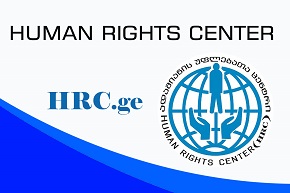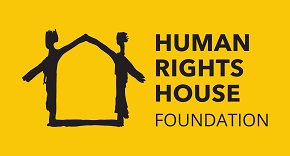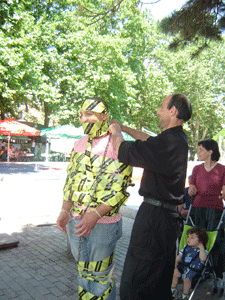 Tea Topuria, Tbilisi
Tea Topuria, Tbilisi
On June 26th the Human Rights Centre and Georgian Centre for Psychological & Medical Rehabilitation of Torture Victims (GCRT) held joint protest in Tbilisi, Kutaisi and Batumi. June 26th is the UN International Day for the Support of Victims of Torture. There was a hope that human torture incidents would not occur after the Rose Revolution. However, people continued to be tortured and no end is in sight. A performance dedicated to the June 26th was held in Vera Park. It had the motto “Don’t Torture, Respect a Human Being”. When the performance was over, the action participants then marched on Rustaveli Ave. and later joined a meeting on the issue of torture being held at the Office of the Public Defender.
The Human Rights Centre has information about various incidents of tortured prisoners, which is often done in order to make them admit to crimes, to intimidate them and take out revenge. Such instances are not isolated and are rather common practice in Georgia. The torture methods are the same: beating (with bats, weapon, boots...), beating on regular basis, threat, abuse, man-to man rape, strangling (weatherboarding, having a bag placed over one’s head, a gas mask) and burning (with a cigarette, hot iron), etc.
Psychological means of torture are also used: isolation, the prisoners are forced to hear the voices other people’s torture, torture of family members and other associates, humiliation, inhuman treatment, deprivation of medical help, threat of being raped, placing with other victims of torture in one cell and so on.
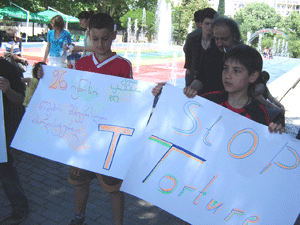
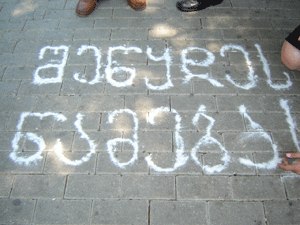 The Human Rights Center also considers that other examples of inhuman treatment when overcrowding exists in detention cells and prisons. Apart from this, healthy prisoners and the prisoners who are ill with contagious diseases, such as TB, often are housed in the same cell.
The Human Rights Center also considers that other examples of inhuman treatment when overcrowding exists in detention cells and prisons. Apart from this, healthy prisoners and the prisoners who are ill with contagious diseases, such as TB, often are housed in the same cell.
However, people are tortured not only in prisons. For instance, Sandro Girgvliani was taken outside Tbilisi by force and physically tortured. Consequently, he died, and this was not an isolated example of the various incidents of assaults, beating sand taking out revenge on citizens. The victims of this kind of assaults become those people that are unfavorable for the current government.
The problem is that there is no data on how many torture victims that there are actually in Georgia. Most torture related cases are not even investigated, and those responsible are not punished and the victims are not compensated. There continues to be a sense of impunity in Georgia towards torture and basic human rights on the part of authorities.
News
December 13, 2023
Ethnic minorities outside the peace dialogue
November 6, 2023
‘Peace’ agenda of political parties
Popular
Articles
February 13, 2024

